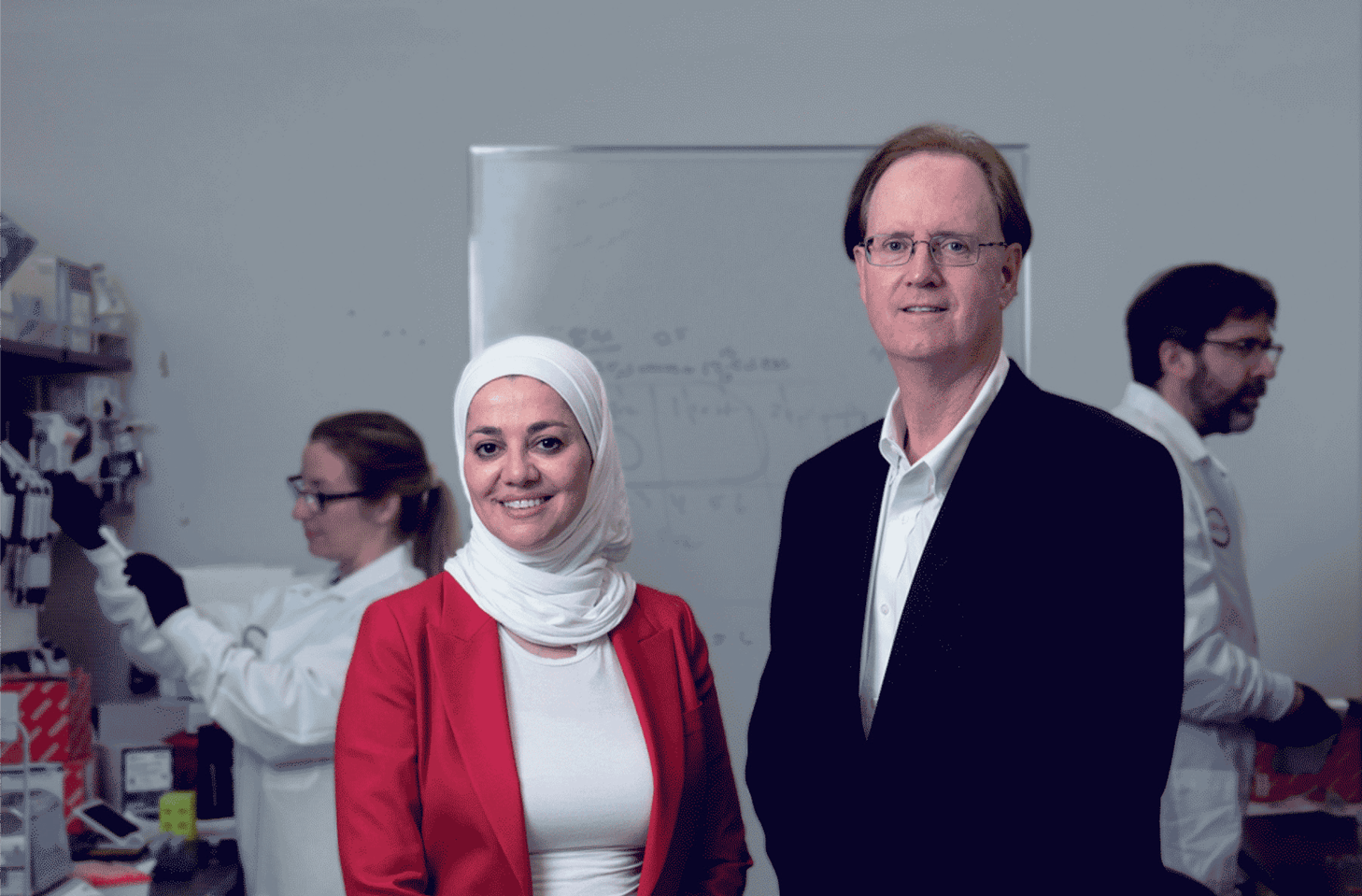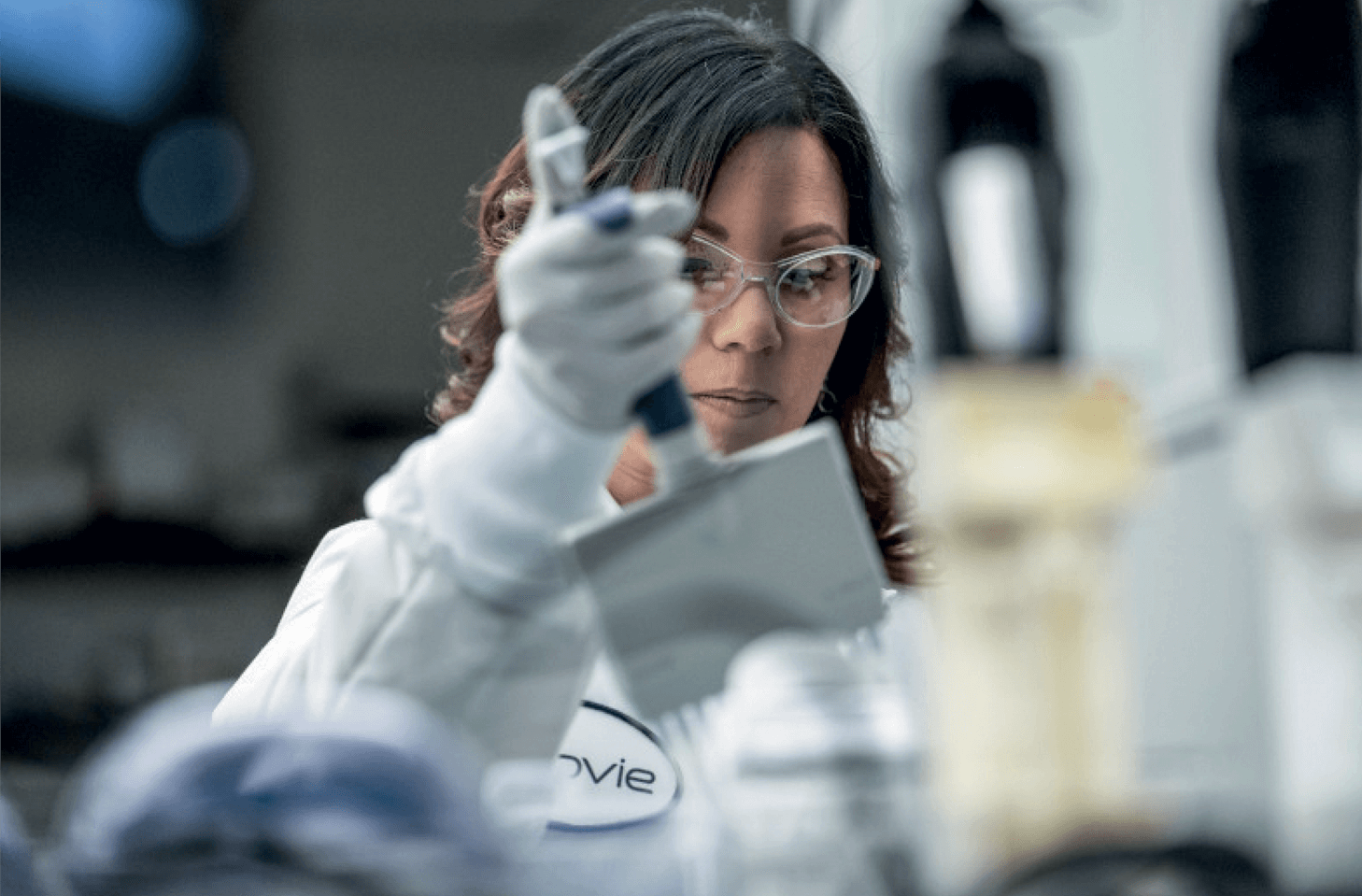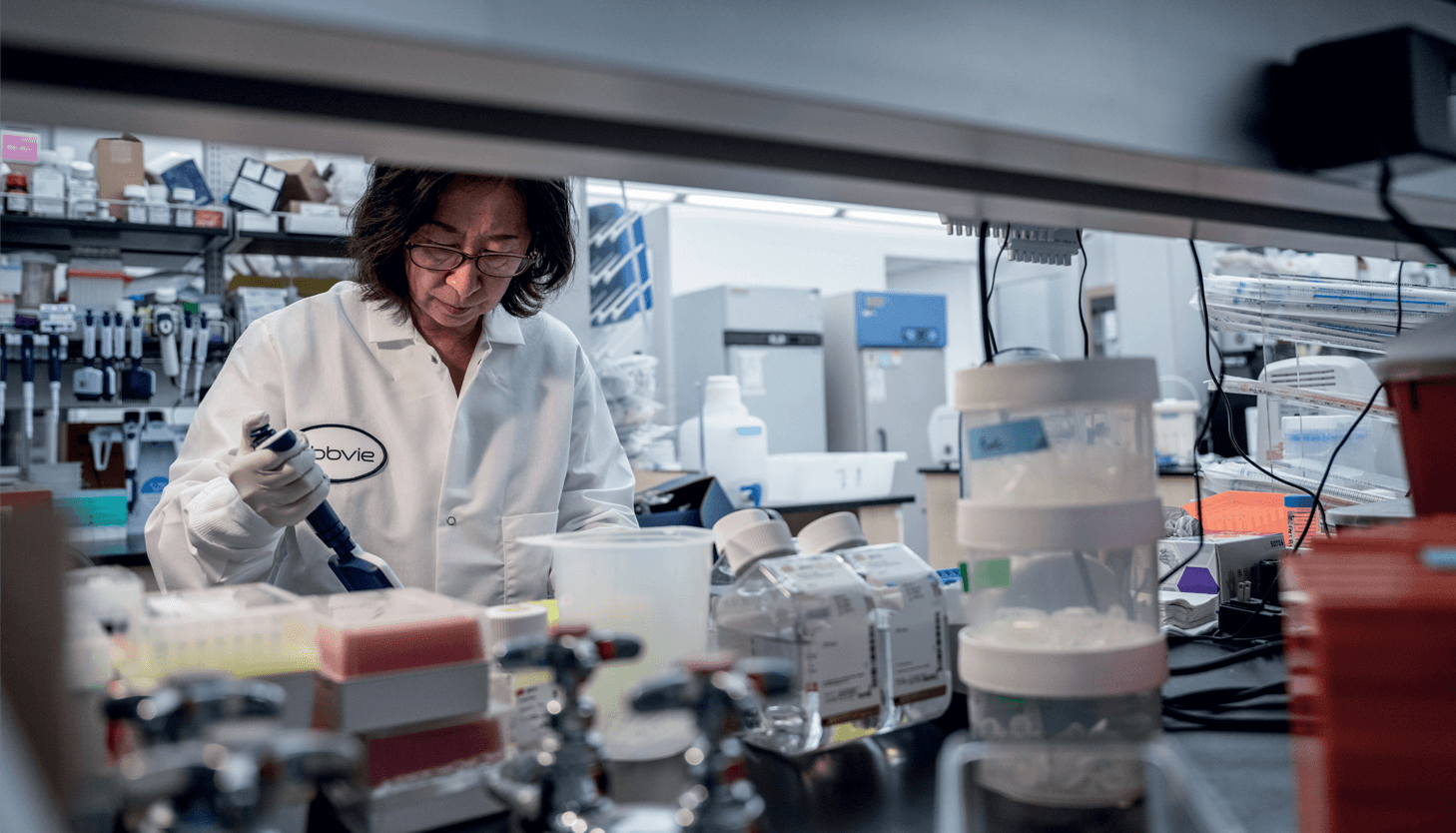 Mayssa Attar, Ph.D., Vice President, Research, Nonclinical and Translational Sciences and Mike Robinson, M.D., Vice President, Clinical Development, Ophthalmology. Images courtesy of AbbVie.
Mayssa Attar, Ph.D., Vice President, Research, Nonclinical and Translational Sciences and Mike Robinson, M.D., Vice President, Clinical Development, Ophthalmology. Images courtesy of AbbVie.
In 2021 it was estimated that 1.1 billion people around the world live with vision loss and 90% of vision loss is preventable or treatable. (2) That’s why AbbVie has set its sights on a future where vision lasts a lifetime, investing in research that aims to improve sight for patients.
Continuing a long journey of discovery
It is the people living with eye conditions around the world that help motivate AbbVie’s eye care scientists to push forward with leading-edge translational research. The company is using new, innovative approaches to investigate some of the major causes of vision loss and impairment, from various stages of glaucoma to retinal diseases and refractive conditions, according to Mayssa Attar, Ph.D., AbbVie’s vice president, research, nonclinical and translational sciences.
With over two decades of experience researching eye diseases, Attar leads the team of scientists responsible for the discovery of potential new treatments and translation of those compounds to clinical trials.
Attar and team are driven by two goals: Bring forward medicines for patients with best-in-class outcomes and reduce the treatment burden. Pursuing these goals is enabled by an eye care journey that began as Allergan over 70 years ago, bolstered today by AbbVie’s legacy in complex diseases and global scale.
Putting the spotlight on unmet needs
A key area of research with great unmet need is retinal disease, driven by degenerative diseases in an aging population, Attar says.
Working on retinal diseases presents unique challenges because of the barriers to drug delivery to the retina at the back of the eye. Additionally, researchers are limited in their ability to collect a sample for analysis.
“These challenges actually speak to how our group is structured and the interdisciplinary approach we take to drug discovery,” Attar says. “Our scientists have become very skilled at using in vitro models and in silico models to close the gap between what we can measure in the lab versus what is operationally feasible in the clinic, which allows us to advance research and test a hypothesis.”
Differentiators like having the same state-of-the-art imaging modalities found in an ophthalmologist’s office, along with modeling and other digital technologies, designed to accelerate the translation of science to new medicine that serve the goal of improving patient outcomes and reducing burden to patients. Modeling can help scientists explore other medications aimed at reducing treatment burden through improved efficacy, longer-acting and optimal methods of delivery.


Illuminating a path for better eye care
Strategic collaborations, both inside and out of AbbVie’s walls, are critical to drive new areas of science, according to Mike Robinson, M.D., AbbVie’s vice president, clinical development, ophthalmology. With a background in academia and many years as a practicing ophthalmologist, Robinson has seen firsthand the great need to elevate the standard of care and continuously improve existing options. While many products exist to treat dry eye, a common condition, there’s still an opportunity to target the inflammation that’s the likely culprit, Robinson says. Another focus is investigating ways to improve vision outcomes over time.
“While there’s no playbook for being a pioneer, we must continue targeting unmet needs and going deep on these diseases.” Robinson says.
With glaucoma as the second-leading cause of blindness globally, there continues to be much opportunity and hope for the next breakthrough.

This advertorial has been created and funded by:

Date of Preparation October 2022
ALL-ABBV-220389
References
- WHO (World Health Organization) Blindness and Vision Impairment Factsheet. Available from: https://www.who.int/news-room/fact-sheets/ detail/blindness-and-visual-impairment. Date accessed October 2022.
- IAPB (International Agency for the Prevention of Blindness) Vision Atlas. Available from: https://www.iapb.org/learn/vision-atlas/. Date accessed October 2022.
